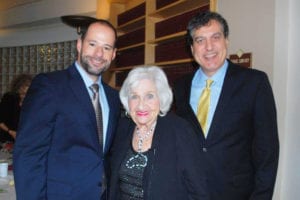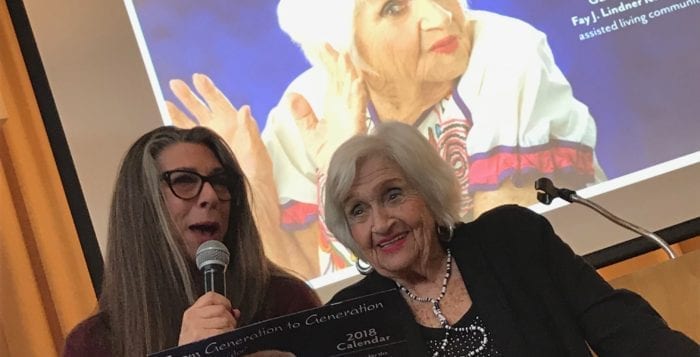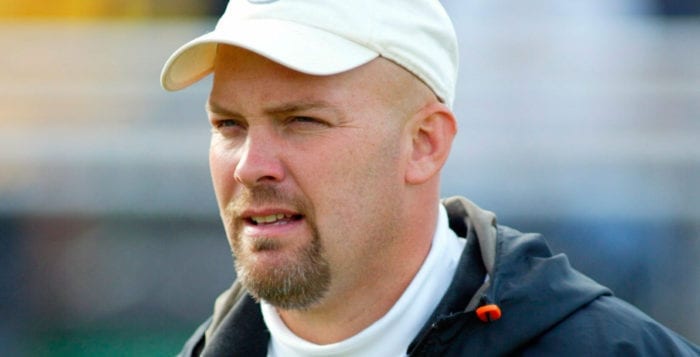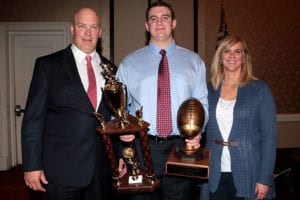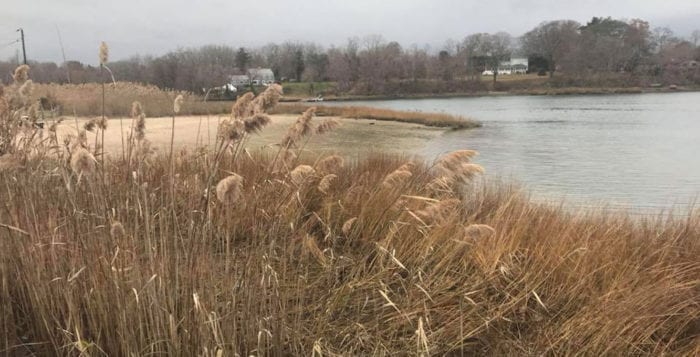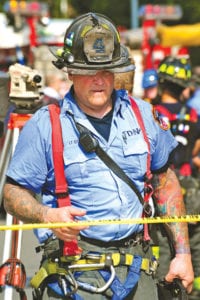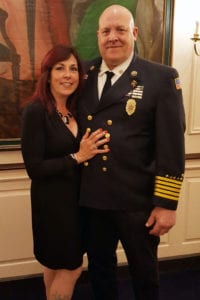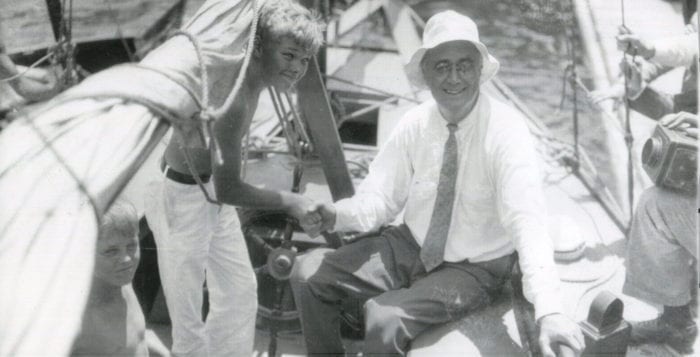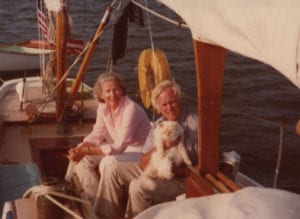Winter Storm Grayson was touted as a powerful blizzard featuring substantial snowfall and hurricane-force winds, and it has delivered.
The National Weather Service issued a Winter Storm Warning for the area beginning 1 a.m. Jan. 4 through 12 a.m. Friday, Jan. 5. The advisory is associated with a large and powerful nor’easter, which took form off the coast of Florida and rode up the east coast.
While the greatest snowfall amounts are expected to be northeast of Long Island, meteorologists expect that we may see as much as 14 inches of snow combined with high winds exceeding 60 MPH that will cause near blizzard conditions. This storm poses a risk of coastal flooding in the Western Long Island Sound.
Gov. Andrew Cuomo (D) has issued a State of Emergency for all of downstate New York. Cuomo also issued a travel advisory from 9 a.m. to 4 p.m. Thursday.
“It is a combination of snow and wind and frigid temperatures,” Cuomo said. “That is a bad mix. I have been driving around myself this morning looking at the conditions — they are terrible, and only going to deteriorate further throughout the day. The wind is going to pick up, and there’s no doubt there is delays on mass transit, and the roads are going to be in poor condition. They’re forecasting three to six inches in the city, up to 12 inches on long Island and six to nine in Westchester. The roads in Westchester are bad. Roads on the Island are bad, and it’s only going to get worse. So schools are closed. If you don’t have to be on the roads, you really shouldn’t be, because it is going to be ugly.”
Brookhaven Town Supervisor Ed Romaine (R) has also issued a State of Emergency in the Town of Brookhaven effective Jan. 4 at 8 a.m. Vehicles that are parked in the street must be moved to driveways or be subject to towing at the owner’s expense. Any abandoned vehicles obstructing access for snowplows and emergency vehicles may also be removed by the town. All residents are urged to stay off the roads unless there is an emergency or if it is absolutely essential to travel.
“Driving is expected to be extremely hazardous due to heavy snow and wind conditions,” Romaine said. “Town snow removal crews will be working throughout the day and night to clear the roads until all are safe and passable.”
As a result of the predictions, many school districts closed school ahead of time.
There are closings at the following schools:
Alternatives For Children – East Setauket
Alternatives for Children Daycare – East Setauket
B.E.S.T. Learning Center – Smithtown
Building Blocks Developmental Preschool – Commack
Calling All Kids, Too – Huntington
Catholic Charities Outpatient Clinic – Commack
Children of America – Smithtown
Children of America – Port Jefferson Station
Church of St. Gerard Majella – Port Jefferson Station
Cold Spring Harbor Central School District
Commack School District
Comsewogue Public Library
Comsewogue School District
Coram Child Care
DDI Adult Day Programs – All Locations
DDI Early Childhood Learning Center – Huntington
DDI School Age Program – Huntington
DDI School Age Program – Smithtown
Day Haven Adult Day Services Program – Port Jefferson
East Northport Jewish Center Religious School
Elwood School District
Elwood’s Little Einsteins
Emma S. Clark Library – Setauket
First Presbyterian Church of Port Jefferson
Gold Medal Gymnastics Center Centereach
Gold Medal Gymnastics Center Huntington
Gold Medal Gymnastics Center Rocky Point
Gold Medal Gymnastics Centers Smithtown
Grace Lane Kindergarten – Coram
Happy Time Preschool – Smithtown
Harbor Country Day School – St. James
Harborfields Central School District
Hauppauge Public Library
Hauppauge Public Library
Holy Family Regional School – Commack
Humpty Dumpty Day Nursery – Greenlawn
Huntington Montessori
Huntington Public Library
Huntington School District
Infant Jesus R.C. Church Religious Ed – Port Jefferson
Ivy League School – Smithtown
JKL Montessori School – Commack
Kiddie Academy – East Setauket
Kiddie Academy – Greenlawn
Kiddie Academy of Miller Place
Kiddie Care Early Learning Center – Commack
Kids of Miller Place
Kids of Mount Sinai
Kings Park School District
LI School for the Gifted – Huntington Station
Little Flower Union Free School District – Wading River
Little Rascals Child Care – Miller Place
Long Island Bone & Joint – Port Jefferson
Love of Learning Montessori School – Centerport
Magic Circle Nursery School – East Northport
Marion Kenney Day Care Center – Wading River
Martin C. Barell School- Commack
Messiah Preschool & Day Care – Setauket
Middle Country School District
Miller Place School District
Miss Barbara’s Preschool – Centereach
Miss Dawn’s Child Care Center – Huntington
Miss Mella’s Footsteps to Learning – Coram
NSSA – Adult Services – Commack
Noah’s Ark Day Care Center – Port Jefferson
North Shore Jewish Center – Port Jefferson Station
North Shore Montessori School – Stony Brook
Northport – East Northport Public Library
Northport / East Northport School District
Options for Community Living Inc. – Smithtown
Our Lady of Wisdom Regional – Port Jefferson
Our Savior New American School – Centereach
Planet Kids – Coram
Port Jefferson Free Library
Port Jefferson School District
Primarily 2’s and 3’s – Mount Sinai
Prime Time Preschool – Kings Park
Pumpkin Patch Day Nursery – Commack
Rainbow Chimes – Huntington
Reach for the Stars Pre – School – Ridge
Rocky Point School District
STEP Preschool – Smithtown
Saf-T-Swim – Commack
Saf-T-Swim – Coram
Sappo School – Commack
Shoreham-Wading River Central School District
Smithtown Central School District
Smithtown Christian Early Learning Center
Smithtown Christian School
Smithtown Special Library District
South Huntington School District
St. Anselm’s Episcopal Nursery School – Shoreham
St. Anthony of Padua Religious Ed – East Northport
St. Anthony’s High School – South Huntington
St. Frances Cabrini Religious Ed – Coram
St. James Lutheran Preschool – St. James
St. James Religious Ed – Setauket
St. Joseph’s Religious Ed – Kings Park
St. Louis de Monfort Religious Education – Sound Beach
St. Louis de Montfort Preschool – Sound Beach
St. Margaret of Scotland Church – Selden
St. Mark’s Religious Formation Program – Shoreham
St. Patrick School – Smithtown
St. Philip Neri Religious Ed – Northport
Step by Step Montessori – Miller Place
Stony Brook Child Care Services
Stony Brook Gynecology & Obstetrics – Rocky Point
Stony Brook Gynecology & Obstetrics – Setauket
Stony Brook Kidney Center – East Setauket
Stony Brook University – Psychological Ctr / Psych B Bldg. – Stony Brook
Stony Brook University
Stony Brook Urology – East Setauket & Commack
Sts. Philip and James Religious Education – St. James
Sts. Philip and James School – St. James
Suffolk County Community College – Selden
Suffolk Y Jewish Community Center – Commack
Sunshine Alternative Education & Prevention Center – Port Jefferson
Temple Beth El Religious School – Huntington
Temple Isaiah Religious School – Stony Brook
Tender Hearts Preschool – Mount Sinai
The Childrens Community HEAD START Program – Port Jefferson
The Day Care Center at Ivy League – Smithtown
The Knox School – St. James
The Laurel Hill School – East Setuket
The Learning Center – Huntington
The Learning Experience – Centereach
The Learning Experience – Mount Sinai
The Learning Experience – Northport
The Learning Experience -Rocky Point
The Learning Experience – Stony Brook
The Village Preschool – Northport
Three Village Church – East Setauket
Three Village Schools – Stony Brook
Trinity Evangelical Lutheran Church – Rocky Point
Trinity Regional School – East Northport
Tutor Time of Nesconset – Smithtown
UCP – Suffolk – Hauppauge
UCP Suffolk – The Children’s Center – Commack
United Methodist Nursery School – Huntington
Wesleyan School – Smithtown
West Hills Montessori – Huntington
Wisdom Tree Preschool – Miller Place
Work of Heart Preschool – South Huntington
Please monitor local media coverage or the National Weather Service for up-to-date weather forecasts and notifications. For your safety and the safety of emergency responders, please adhere to all travel restrictions and advisories that may be issued.
For you convenience, listed are some important emergency and not-emergency contact numbers to help you get through the storm should you need assistance:
PSEGLI Outages – 800-490-0075
Police Emergency – 911*
Police Non-emergency – (631) 852-2677, (631-852-COPS)
Town of Brookhaven Highway Department – (631) 451-9200**
Suffolk County Department of Public Works – (631) 852-4070***
*Please do not call 911 or other emergency telephone lines unless you are in need of assistance with an immediate physical or medical emergency.
**Responsible for all roads in the district (outside of incorporated villages) except County Road 97 and New York State Routes 112, 25A and 347.
***For emergency issues on county roads such as Nicolls Road (CR 97) only.
Additional information, notifications and details may be posted by Suffolk County’s Department of Fire, Rescue and Emergency Services as the storm develops and impacts the area. Click here to visit the department’s information page.
